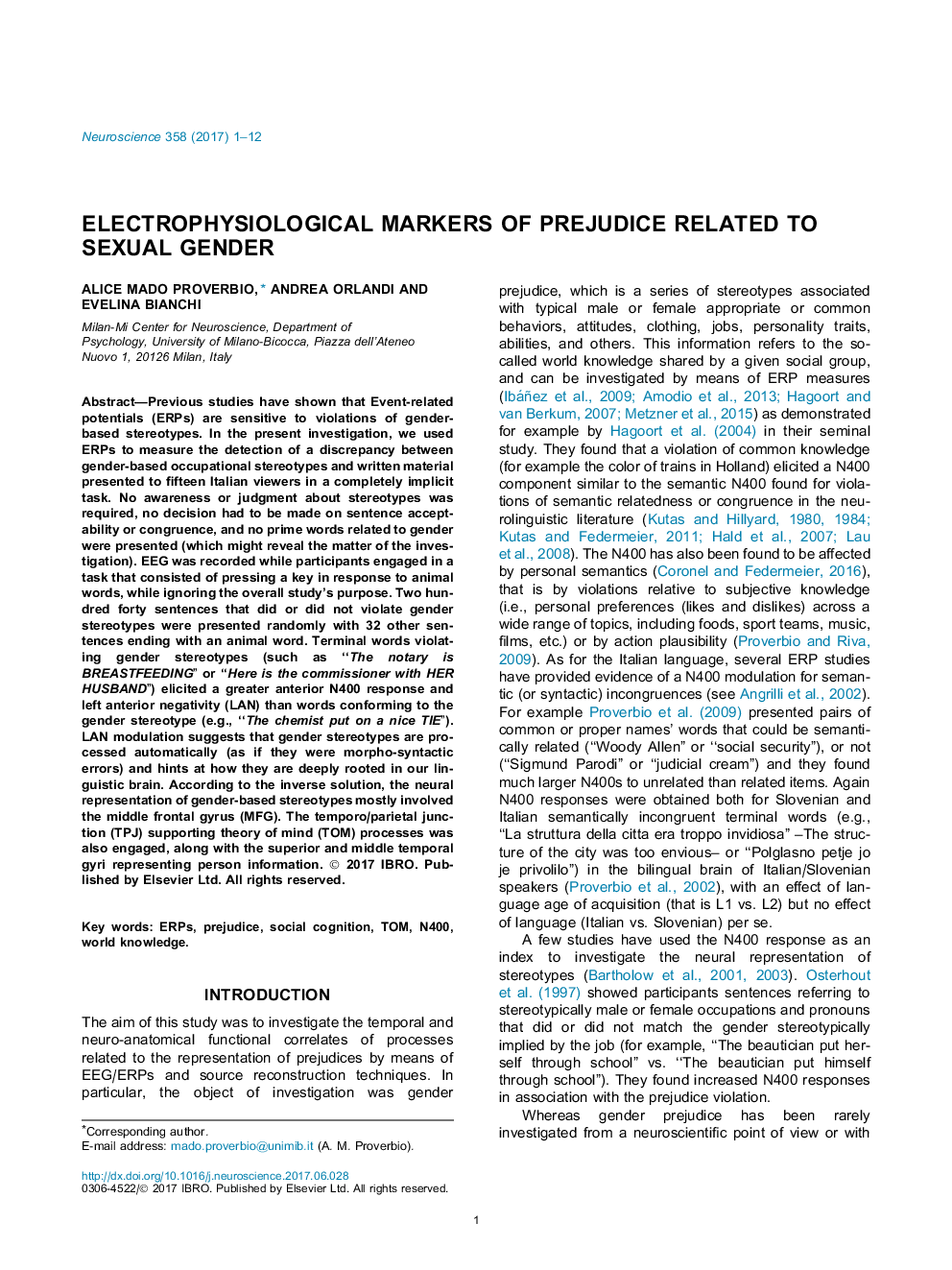| Article ID | Journal | Published Year | Pages | File Type |
|---|---|---|---|---|
| 5737625 | Neuroscience | 2017 | 12 Pages |
â¢To study gender prejudice, a completely implicit paradigm was developed to avoid social desirability processes.â¢ERPs to terminal words violating (or not) occupational stereotypes were recorded during an animal detection task.â¢Violation of gender-bias prejudices elicited an anterior N400 response followed by left anterior negativity (LAN).â¢N400 generators mainly involved the middle frontal cortex and the TPJ.
Previous studies have shown that Event-related potentials (ERPs) are sensitive to violations of gender-based stereotypes. In the present investigation, we used ERPs to measure the detection of a discrepancy between gender-based occupational stereotypes and written material presented to fifteen Italian viewers in a completely implicit task. No awareness or judgment about stereotypes was required, no decision had to be made on sentence acceptability or congruence, and no prime words related to gender were presented (which might reveal the matter of the investigation). EEG was recorded while participants engaged in a task that consisted of pressing a key in response to animal words, while ignoring the overall study's purpose. Two hundred forty sentences that did or did not violate gender stereotypes were presented randomly with 32 other sentences ending with an animal word. Terminal words violating gender stereotypes (such as “The notary is BREASTFEEDING” or “Here is the commissioner with HER HUSBAND”) elicited a greater anterior N400 response and left anterior negativity (LAN) than words conforming to the gender stereotype (e.g., “The chemist put on a nice TIE”). LAN modulation suggests that gender stereotypes are processed automatically (as if they were morpho-syntactic errors) and hints at how they are deeply rooted in our linguistic brain. According to the inverse solution, the neural representation of gender-based stereotypes mostly involved the middle frontal gyrus (MFG). The temporo/parietal junction (TPJ) supporting theory of mind (TOM) processes was also engaged, along with the superior and middle temporal gyri representing person information.
Graphical abstractDownload high-res image (76KB)Download full-size image
